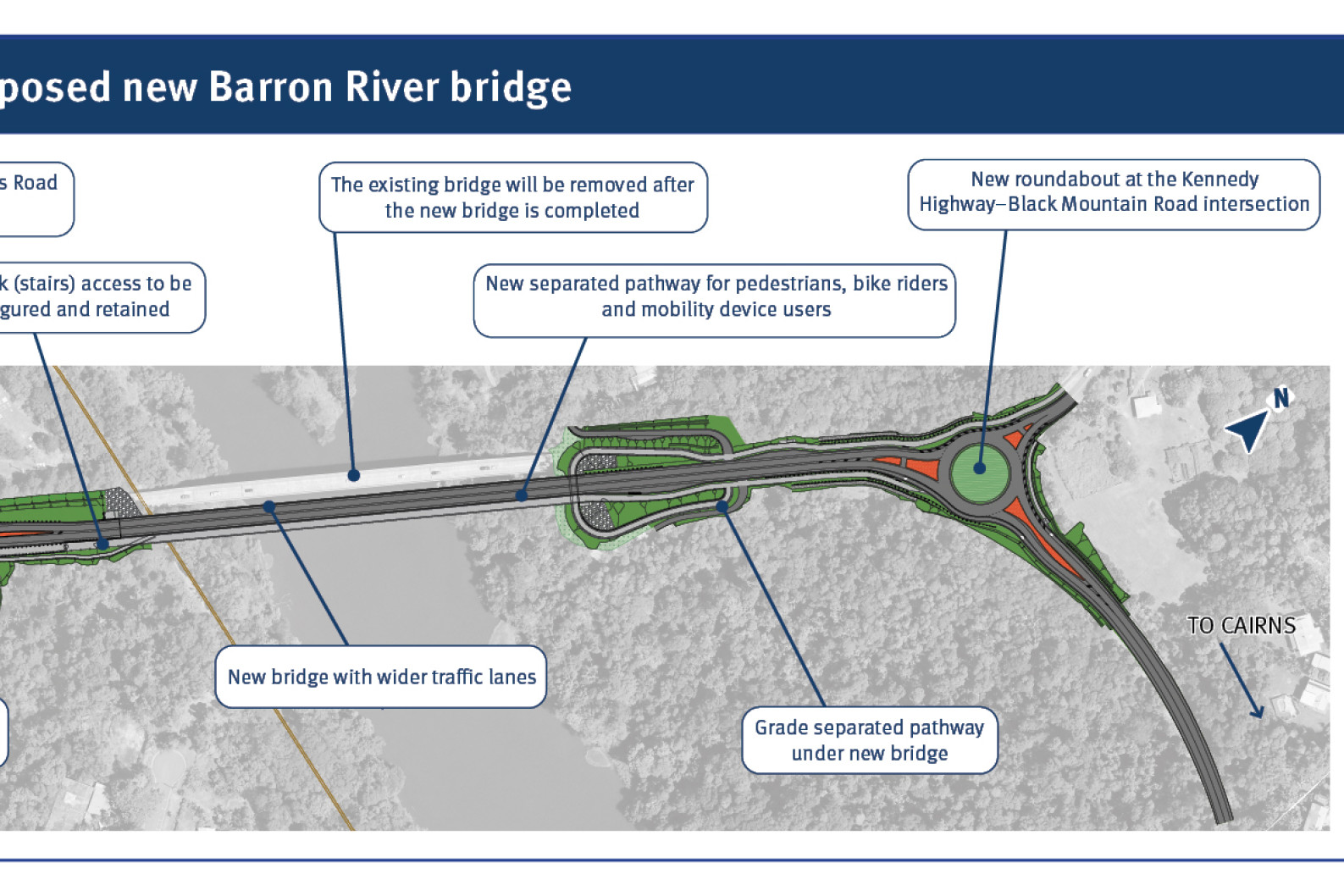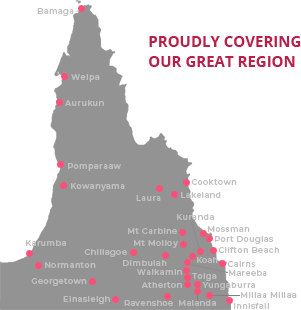General News
27 May, 2025
Business case prefers new bridge
TABLELANDS communities can expect at least a four-year wait before a new Barron River Bridge will be complete, according to the highly anticipated business case released by the state government last week.

Replacing the old bridge with a new superstructure was the preferred option recommended to the government, however, the expected timeline for “enabling works, construction works, and decommissioning works” would take a minimum of four years, when factoring wet seasons.
The new bridge, expected to cost $490 million, would cover about 270m of river with three spans, located downstream from the existing bridge build.
It would have wider traffic lanes, a wide centre-line treatment and a painted median.
A new pathway for pedestrians and bike riders, separated from traffic with a barrier, was also recommended to improve safety.
The concept layout for the new bridge also included a turnaround capability on the Kennedy Highway at the top of the Kuranda Range.
The existing bridge would remain in service with routine maintenance and testing, and would only be removed once the new bridge was complete.
Minister for Transport and Main Roads Brent Mickelberg said the new bridge would improve network reliability and safety for all road users, while minimising potential environmental and cultural heritage impacts.
The Barron River Bridge, constructed in 1963, stretches 256m with six spans over the Barron River and is the vital link in commuting, tourism and transportation from Cairns to the Tablelands.
Since 2020, the bridge has been regularly closed, or open for one lane only, after fatigue cracks in certain steel components of the bridge were identified. This was due to decades of exposure to heavy vehicle loads.
Compounding the commuter delays has been the closure of a number of sections of the Kuranda Range Road following the devastation caused by ex-tropical cyclone Jasper.
“The Barron River Bridge is an important road connecting communities in the Far North, which is why we committed to fixing it,” Mr Mickelberg said.
“We welcome the Federal Government’s funding commitment of $245 million to the project and look forward to making further funding announcements at the earliest opportunity.
“Engagement with key stakeholders and local government is already underway, with industry briefings on the project to be held in the next few months.”
Local Government leaders were welcoming of the news, with Mareeba Shire Council Mayor Angela Toppin saying the news was “encouraging”.
“The Kuranda Range is a critical route between Cairns, Mareeba Shire and further to the Cape,” she said.
“We will continue to advocate for a new bridge to be delivered as soon as possible as it is vital for driver safety, freight efficiency and transport reliability for our residents and emergency services who use this road daily.”
Tablelands Regional Council Mayor Rod Marti said the bridge was an important access and freight route which the “community and economy rely on”.
“We look forward to seeing the Queensland Government progress the project through to delivery.”
Member for Barron River Bree James said the release of the summary business case was “the news my community has been waiting for”.
“We can now move forward with a long-term solution for Barron River and ensure the Far North stays connected,” she said.
Member for Cook David Kempton also thanked the government for getting on with the job, saying: “The community has been fighting tooth and nail for a safe and reliable bridge.”
The business case economic analysis ruled out upgrading the existing bridge due to its structural condition and age, as well as the need to construct a temporary bridge while it underwent refurbishment.
The new bridge construction program is expected to consist of several phases including enabling works, construction works, and decommissioning works, according to the business case.
The enabling works alone were expected to take 12 months to prepare before the main bridge and approach construction works could begin.
These would be carried out over three years to account for wet season mobilisation and demobilisation.


